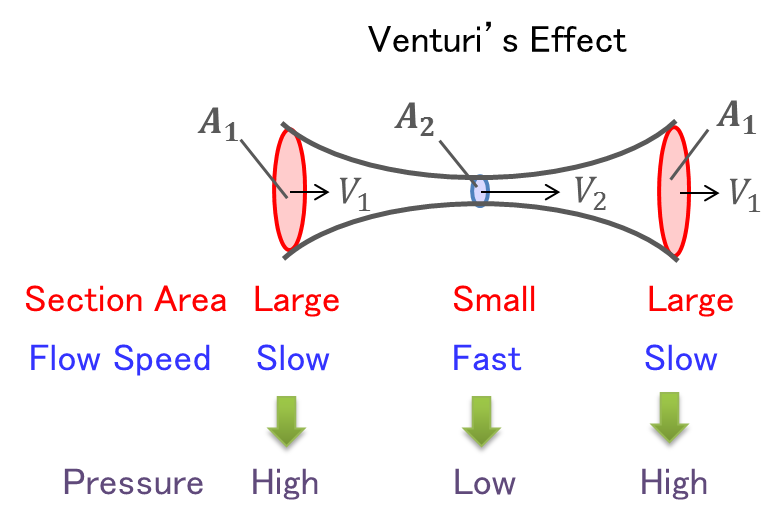Hydrodynamics in Dolphin Swimming

Dolphin has a sophisticated body for swimming. Its body is streamline and effectively inhibits flow separation reducing the fluid dynamic pressure drag. Smoothness of body surface can also reduce the friction drag.
In addition, a mother dolphin utilizes some hydrodynamic effect to support the swimming of a calf that is called "dolphin drafting". A newborn calf usually has a weak swimming ability and thus can not keep up with its mother. The mother then swims with the calf side by side and drafts the calf using the hydrodynamic effect called "Venturi's effect".

Venturi's effect is based on the "Bernoulli's Theorem" where the speed and the pressure of flow have negative correlation along the pathline under the condition that there is no inflow and outflow of energy. As shown in the figure above, under the condition that there is no compressibility in the flow, the flow going through the wide section flows slowly and then has a large pressure, and the flow going through the narrow section flows quicky and has a low pressure. The flow between the mother and the calf swimming side by side flows quickly because of the narrow area between them, and thus has a low pressure resulting in the mother can draft its calf using this low pressure like a vacuum cleaner without directly pulling or pushing its calf.
Examples of movies of dolphin drafting can be seen in the following linls.
(movie 1) (movie 2)
We are analyzing the effect of the size of dolphins or their relative position on the drafting. We fabricated dolphin models using 3D CAD and 3D printers and conducted the wind tunnel experiments. In cosequence, it was clarified that the drag strognly depended on the relative position among the mother and the calf and there was the optimum position where the calf could swim easily with the minimum drag.
Wind tunnel test with dolphin models